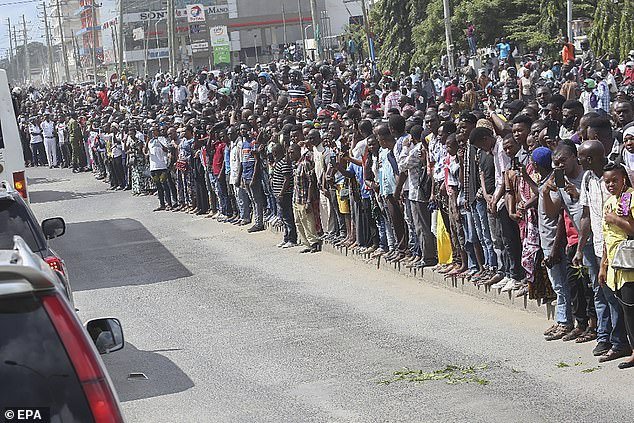March of the Megacities: Global total to rise to 37 by 2050
>
By 2050, 70 percent of the world’s population is expected to live in megacities, according to the Institute for Economics and Peace.
The status is usually awarded to a city with a population of more than 10 million, which is often beset by issues such as pollution, congestion, and overcrowding.
There are currently 33 such cities in the world, the largest being Tokyo, with a population of 37.3 million. A total of 19 of the world’s current megacities are located in Asia.
Those cities will join 14 others by 2050, says consumer data and marketing group Statista. Cities that will see marked growth in population include Chicago, London, and Tehran.
The biggest increase will be in Dar es Salaam, in Tanzania, where the population is expected to rise from 7.5 million to 16.4 million by 2050.
The nation of Tanzania will account for more than half of the world’s population growth between now and 2050, along with other African nations, Ethiopia, Nigeria and the Congo.
A 2021 UN report projected that the world population will reach around 8.5 billion in 2030, 9.7 billion in 2050, and 10.4 billion in 2100.
The same report puts the current US population at 337 million, reaching 375 million in 2050. The population growth rate in 2021 was just 0.1 percent, the lowest since the country was founded. .
The only place in the US expected to join the ranks of megacities is Chicago, where the population is expected to increase more than 20 percent, from 8.9 million to 10.8 million.
The Windy City will join the other three North American cities on the list, Los Angeles, New York and Mexico City.

Chicago is expected to join Los Angeles and New York City as the only megacities in the United States.

Residents of Dar es Salaam awaiting the funeral procession of President John Magufuli in 2021
Other countries rounding out the list with the fastest growing populations are Egypt, Pakistan, the Philippines and India, which will overtake China as the world’s most populous nation by April 2023.
In 2021, the United Nations identified 34 megacities in the world. The UN predicted that the number would rise to 48 by 2035.
The same report said that 85 percent of the world’s population will live in cities by the year 2100.
The current megacities of the world are Delhi, Dhaka, Cairo, Tokyo, Mumbai, Shanghai, Kinshasa, Lagos, Karachi, Mexico City, São Paulo, Beijing, Calcutta, New York, Manila, Lahore, Bangalore, Chongqing, Buenos Aires, Osaka, Hyderabad, Tianjin, Guangzhou, Los Angeles, Rio de Janeiro, Bangkok, Jakarta, Shenzhen, Lima, Paris and Moscow.
The Statista report says that of those cities, only three will see a population decline between now and 2050, with Moscow losing 3 percent while Osaka and Tokyo in Japan will lose 12 percent.
Despite the drop, Tokyo will still be the fourth largest city in the world in terms of population.

Japanese Prime Minister Fumio Kishida vowed on Monday to take urgent action to tackle the country’s declining birth rate.
Japanese Prime Minister Fumio Kishida vowed on Monday to take urgent action to tackle the country’s declining birth rate, saying it was “now or never” for one of the world’s oldest societies.
In recent years, Japan has been trying to encourage its people to have more children with promises of cash bonuses and better benefits, but it remains one of the most expensive places in the world to raise a child, according to surveys.
In another megacity, Kinshasa, home to more than 12 million people, many families struggle to find affordable housing and pay school fees. While primary school students attend for free, older children’s chances depend on their parents’ income.
Rapid population growth also means more people compete for scarce water resources and leaves more families facing hunger as climate change increasingly affects crop production in many parts of the world, according to the Statista study. .
Despite populations soaring in some countries, the UN says rates are expected to fall 1 percent or more in 61 countries.
